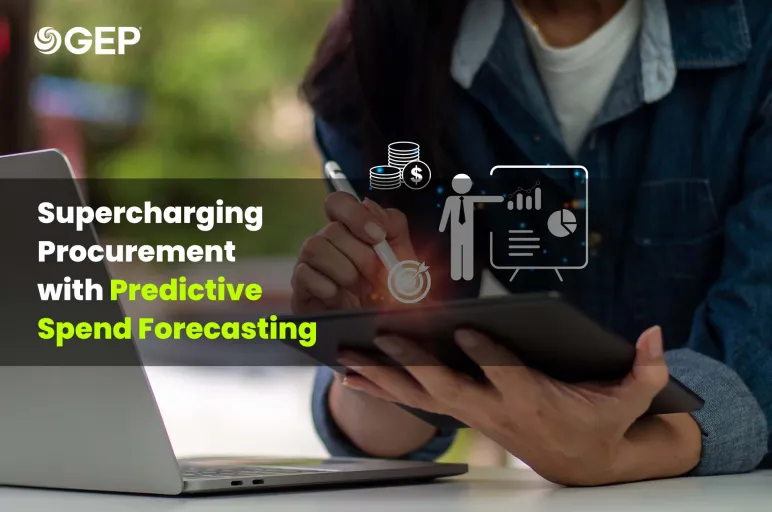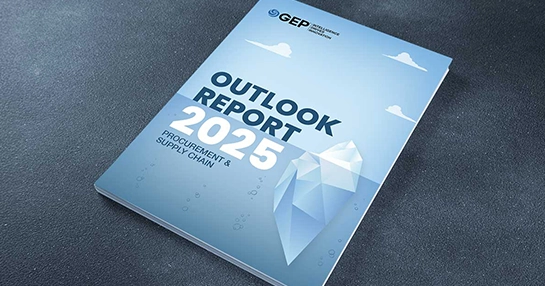
Moving Procurement from Guesswork to Precision with Predictive Spend Forecasting
- Predictive spend forecasting uses historical data and business signals for precision.
- Predictive spend forecasting reduces budget surprises and improves sourcing timelines.
- It also strengthens supplier trust through visibility and planning.
October 31, 2025 | Spend Management 5 minutes read
Most procurement teams still plan future spend the old way — using historical averages, fixed annual budgets, and a dose of experience. It works until market shifts make old patterns useless. A production increase, new supplier tariffs, or an unplanned marketing push can distort demand and throw category budgets into chaos.
Finance wants precision. Business units expect flexibility. Procurement ends up firefighting. Indirect categories like IT services or logistics often overshoot forecasts, while direct categories fall short. By the time teams adjust, the quarter is over and the explanation slides read “unforeseen spend.”
That reactive approach causes real damage. Supplier relationships fray when commitments change at the last minute. Budget overruns make procurement look uncoordinated. And without accurate forecasting, strategic sourcing loses its edge — because teams can’t plan events or lock pricing early enough to gain advantage.
For most organizations, the problem isn’t lack of data. It’s the inability to translate data into a reliable view of what’s coming next.
Why Today’s AI and Analytics Tools Fall Short
Procurement leaders have invested heavily in analytics platforms and spend cubes. These tools describe the past in vivid detail — who bought what, from whom, and for how much. They help identify savings after the fact but stop there. They rarely explain what will happen next quarter or next year.
The reason is structural. Most legacy tools run on static rules. They pull spend data from ERP systems and visualize trends but treat each data point as isolated. When the business changes — new suppliers, new product lines, new regions — those models can’t adapt without reconfiguration.
Machine learning models tried to fill this gap, but even they have limits. Many operate inside narrow silos. A predictive model for raw material prices, for instance, won’t connect to HR headcount data or production forecasts. Procurement needs these linkages to forecast category-level spend accurately.
This limitation has surfaced in multiple industry studies. GEP and NC State University found that while 70% of procurement leaders plan to use AI for planning, only a minority have integrated operational data into their models. Without that integration, even “predictive” tools are reactive. They tell teams what happened with more speed but no foresight.
The results are predictable: delayed sourcing, unplanned purchases, and budget cycles dominated by corrections instead of planning. Teams may celebrate a few wins from one-off cost reductions but lose ground when commodity markets or production targets shift.
Ready for Procurement Success? GEP Has the Solution
Transform your business with our AI-powered procurement software and services
The Missing Link — Dynamic Forecasting that Learns with the Business
Predictive spend forecasting goes beyond trend analysis. It behaves more like an early-warning radar than a rearview mirror. The model keeps on adjusting, while feeding on signals from across the enterprise — not just finance or procurement data.
Imagine a scenario where a company plans to open a new plant in Mexico next quarter. Traditional forecasting tools would miss that until invoices start arriving. Predictive forecasting would already factor it in, using workforce expansion data, facility setup costs, and supplier lead times to adjust regional spend expectations.
It also captures external volatility. If steel futures rise 8% month-on-month, the model simulates impact on relevant categories, recommends alternate sourcing windows, or warns procurement that budget assumptions no longer hold. That visibility means procurement can reschedule sourcing events, renegotiate with suppliers, or reallocate funds before the impact hits.
Seasonality plays a role too. A consumer goods company, for instance, sees a sharp rise in packaging and logistics costs ahead of the holiday season. Predictive forecasting can model these cyclical spikes and help the team align contract terms and buffer inventory.
This dynamic learning approach transforms forecasting into a live system. It reflects how the business operates, not how it looked last year. Procurement gains time — the rarest resource — to plan, negotiate, and collaborate.
How Predictive Forecasting Changes Procurement’s Day-to-Day Reality
When procurement teams can see spend curves before they form, they stop chasing approvals and start steering conversations. Forecasting accuracy drives better sourcing calendars. Categories with high volatility get early attention, while stable ones can run on autopilot.
Finance benefits as well. Forecast alignment between finance and procurement reduces mid-year budget resets and increases trust in planning cycles. When finance trusts the data, procurement gets more freedom to plan strategically instead of justifying variances.
Suppliers also feel the shift. Predictability builds confidence. If a supplier knows a buyer’s volume expectations three months ahead, it can plan capacity, offer better pricing, and avoid stockouts. Procurement, in turn, reduces premium freight and last-minute buys — both top drivers of budget leakage.
It has been observed that companies using predictive analytics in procurement achieve up to 20% reduction in unplanned spend and cut sourcing cycle times by about 30%. That’s because forecasting accuracy doesn’t just save money; it changes behavior. Teams stop reacting and start managing.
Another benefit comes in category management. Forecasting models reveal category-level drivers like inflation sensitivity or headcount correlation. A sudden increase in contract labor demand, for instance, can be traced back to internal projects, helping procurement link cost drivers directly to business activities. This clarity allows more productive conversations with stakeholders and more credible negotiations with suppliers.
Explore 101 AI Use Cases
Real-world use cases that show how AI is transforming every stage of procurement
Procurement Software with AI Agents Brings It All Together
Predictive forecasting reaches full potential only when built into procurement software that connects data, categories, and suppliers on one platform. Standalone models can make good predictions, but without execution capabilities, their insights fade.
Procurement platforms with AI agents integrate forecasting with action. The system learns from historical spend, market movements, and internal signals like production volume or hiring plans.
Because it connects to sourcing, contract management, and supplier collaboration tools, the same system can trigger early supplier communication, align sourcing calendars, and adjust budget plans in real time. Procurement teams no longer scramble to explain cost variances; they show the actions already taken to mitigate them.
As organizations embed these capabilities, procurement evolves from a transactional function to a forward-looking advisor. Forecasting becomes less about numbers and more about readiness — a shared understanding of what’s coming and how to prepare.
That’s how procurement moves from guesswork to precision — not just with dashboards that summarize yesterday, but with forecasts that think like tomorrow.



